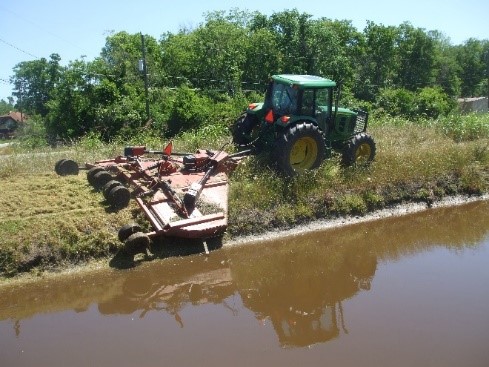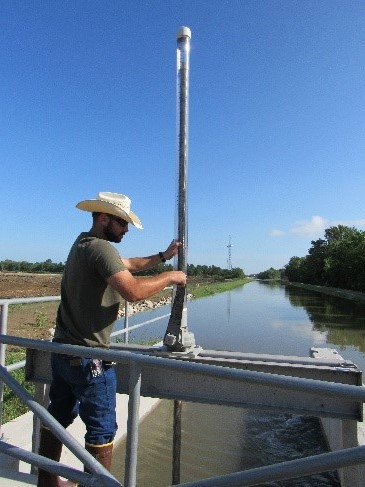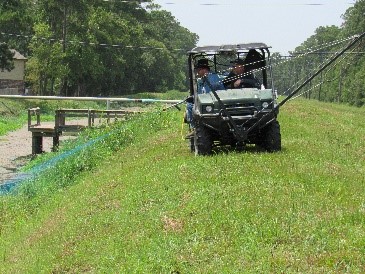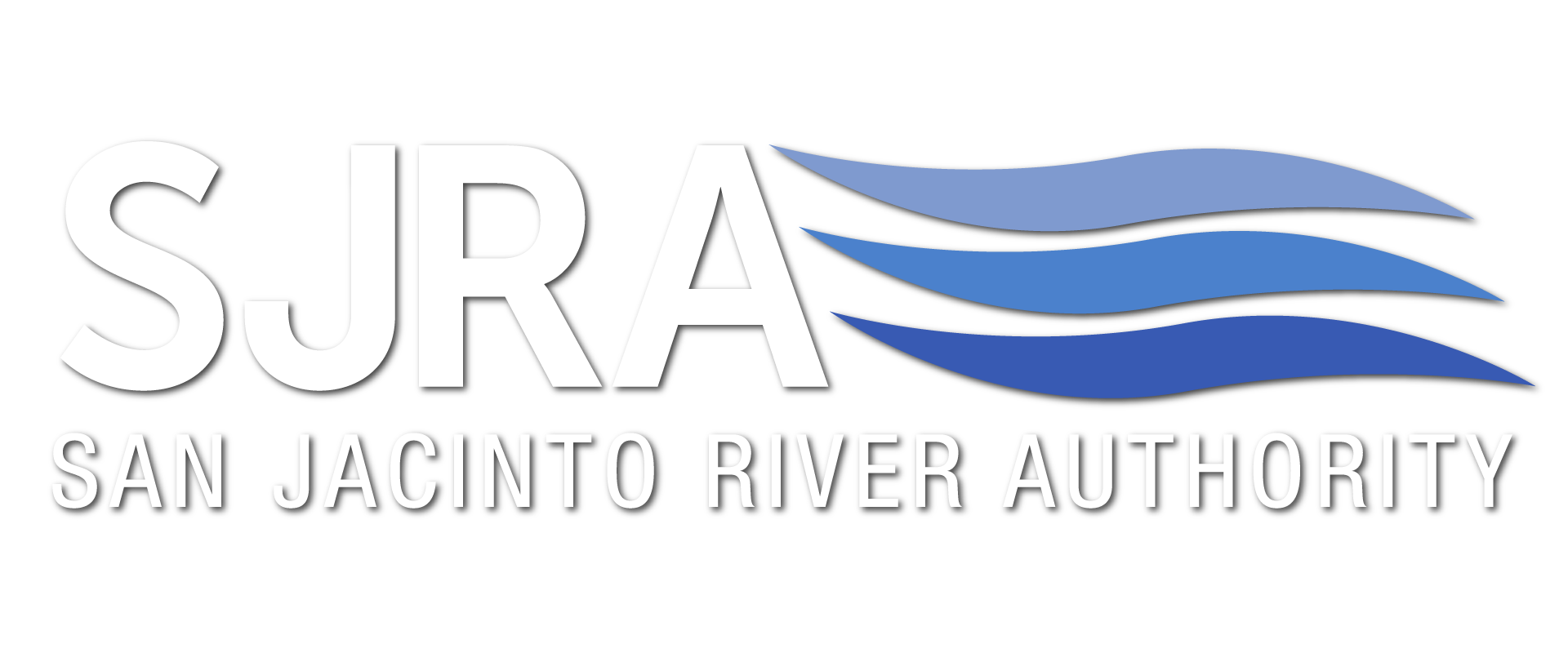By: Kim Wright, Highlands Division Manager.
Since the late 1940’s, the Highlands Division staff has been charged with operating and maintaining approximately 30-miles of a Raw Water System, including canals, levees, pump stations, 50+ siphons, and the 1,400 acre Highlands Reservoir. This effort requires multiple skill sets and a team focused on getting the job done on a daily basis. The Highlands Division currently has a dedicated Operations and Maintenance (O&M) Team of nine employees, including Heavy Equipment Operators, a Pump Stations Manager, an O&M Lead, and an O&M Manager. The Division staff is fortunate to have three veteran employees with over 10+ years working in the Highlands. This article outlines the various responsibilities that this team tackles on a routine schedule to keep the system operating reliably on a 24/7/365 basis.
Daily Operations
Each morning, one O&M staff member drives the entire 30-mile system to inspect the canals and levees, to observe conditions at the siphon and culvert crossings, and measure water levels at critical locations so that any required changes to pumping or gate adjustments can be made to maintain customer service at the required flows. Once water is pumped into the system, all operation is by gravity flow through system and it is essential that there is enough hydraulic head to allow water to flow through the structures down to the Highlands Reservoir to maintain reservoir storage levels and to adequately meet flow requirements at the diversion points for all customers. The O&M staff also monitor water salinity weekly and provide this information to industrial customers on the East and South Canals. An important element of the daily inspection of the system is to record any new canal problems that have occurred and which need to be scheduled for repairs or that should be addressed immediately to maintain reliable flows in the system. More importantly, the O&M staff are required to immediately address any unanticipated blockages that impede/restrict flow. If required, staff may use heavy equipment to remove debris out of the canal system and ensure proper disposal. Unfortunately, illegal dumping of all sorts of trash occurs in the remote areas of the canal system and frequently occurs at major roadway crossings during night-time hours.
Mowing/Canal Maintenance
The entire interior canal is grass-lined above the canal flow line and the outside of the canal levees are primarily grass-lined; therefore, the system requires mowing approximately four times a year using tractors with “bat-wing” or slope-mowing attachments. Between mowing cycles, siphon headwalls and other structures require use of hand-operated tools for weed removal and/or herbicide spraying to control weeds and small brush, especially along fences, at gates, and for other structures at the property boundaries. The O&M staff typically conducts one additional monthly inspection solely to review vegetation issues along the entire length of the canal system and log their findings in order to create appropriate work orders for subsequent action.
Invasive Species Control
Control of aquatic invasive species, both plant and animal, require constant attention in the Highlands. Nutria represent a particular challenge in the Highlands due to damage from burrows and tunneling into the sides of the levees, which can result in voids that can collapse and flip a mower or actually cause levee failures. Another continuous challenge is the control of aquatic vegetation. Staff must periodically attend training in order to acquire and maintain herbicide application licenses from the Department of Agriculture and must meet all the requirements defined in SJRA’s formal Pest Control Program before authorization to conduct animal eradication can be granted. Rooted plants growing in the shallow Highlands canals can restrict the flow and significantly reduce the carrying-capacity to unacceptable levels. The EPA strictly regulates the type and application of herbicides that are acceptable for use in water supplied for municipal purposes; therefore, regular training and education is necessary to maintain the required licenses for aquatic systems.
General Maintenance
The Highlands Division O&M staff not only operate a wide range of machinery, but also have special expertise in maintaining and repairing mechanical machinery and heavy equipment used by the Authority. The O&M staff perform the majority of all preventative maintenance (PM) work orders on machinery and for pumps, motors, gates, and other equipment in the system. The O&M staff also diagnose and address issues that arise related to the maintenance of equipment and fleet vehicles. Scheduled PM includes maintaining and periodically changing all fluids in the equipment at required intervals and completing comprehensive inspections on all operating machinery and equipment in the system. Along with PMs, the staff also conducts many required corrective maintenance activities such as replacing worn or broken bearings, seals, belts or other mechanical parts, as required. The possibilities for corrective maintenance are endless due to the variety of equipment and facilities that must be maintained.
Small Construction Projects
The O&M staff in the Highlands possess a variety of skills that extend beyond the operations and maintenance of the system into the physical construction activities required to repair and rehabilitate many components of the system. The cost savings provided by performing projects in-house rather than using third-party contractors can be significant. Recently, the O&M staff in the Highlands, assisted by other departments within the SJRA, have planned and executed multiple small construction projects, including demolition and construction of new concrete slabs, SCADA buildings, meter houses, flow control gates, culvert crossings, and access pipe gates and fences for improved access and security throughout the system.
Conclusion
The Highlands Division operates and maintains 30-miles of canal system extending from Lake Houston through Crosby downstream to Baytown and Mont Belvieu. These O&M staff are a talented group of individuals that have diverse and valuable skill sets for the SJRA’s various needs in the Highlands Division, but who work effectively as a team. This hard-working group of individuals tackle many diverse projects with pride, ownership, and a focus on getting the job done effectively and efficiently. The Authority is fortunate to have these dedicated employees working in the Highlands and making sure the water is delivered every single day with no exceptions, as required by our customers.
Featured in the January, 2019 Issue of Dock Line Magazine.




